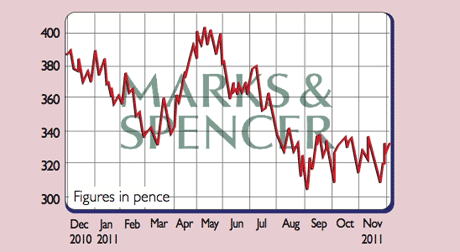
What is it?
Marks & Spencer (MKS) is one of Britain’s leading retailers, selling clothing, household products and food from its stores and over the internet. It has an 11.5% share of the British clothing market, and a 3.6% share of food retailing. The company has 712 stores in Britain and 369 overseas.
What is the company’s history?
In 1884, Michael Marks, a Polish refugee, opened a stall in Leeds Kirkgate market selling items for a penny each. In 1894, Marks formed a partnership with Tom Spencer, which led to Marks & Spencer becoming a limited company in 1903. The St Michael brand – established in 1928 – became a hallmark for quality in clothing and food. M&S became one of Britain’s most successful companies, paving the way for its expansion overseas and into areas such as financial services via its storecards.
However, in the late 1990s, the company lost its way, with its clothing in particular falling out of favour with customers, and profits collapsed. After two failed takeover bids by Philip Green in 2000 and 2004, Stuart Rose took over as chief executive. The company’s fortunes improved from then on. The weak British economy has depressed trading in recent years, with profits some way below the peaks achieved in the 1990s.
Who runs it?
Marc Bolland has been chief executive since May 2010, having previously been CEO of Morrisons Supermarkets. His basic salary is £975,000. Robert Swannell is chairman and Alan Stewart is chief financial officer.
How’s trading?
Sales for the six months to 1 October 2011 increased by 2.4% to £4.7bn. International sales grew by 9%, while UK food sales were up 3.9%. General merchandise sales dipped by 0.8%, reflecting a tough competitive environment. Operating profit fell by 9.8% to £369.3m due to rising costs and the need to cut prices in shops to attract customers. Earnings per share fell by 6% to 15.6p, while the interim dividend was held steady at 6.2p per share.
What’s the outlook?
Given that profits are very sensitive to changes in sales, much will depend on the key Christmas trading period. But with disposable incomes increasingly stretched, M&S may have to offer bigger discounts on its products to compete with its rivals. This means that full-year profits will probably be lower than last year’s. In the longer run, M&S is revamping its British stores in order to improve its customer appeal, while investment in China and India bodes well for its overseas profits.
Our view
Although the shares are not expensive and the 5.2% yield looks attractive, Marks & Spencer’s exposure to a weakening British economy means the shares could fall further. A buy for the brave.
The analysts
Of the 33 analysts surveyed by Bloomberg, nine say “buy”, 19 “hold” and five “sell”. The average price target is 368p – 11% above the current share price. Most bullish is Oriel Securities with a 525p price target. At the other end of the opinion spectrum, Standard & Poor’s is the most bearish of the analysts with a 295p target.
The numbers
Stockmarket code: MKS
Share price 330p
Market cap: £5.2bn
Net assets (October 2011) £2.8bn
Net debt (October 2011) £2.0bn
P/E (current year estimate) 9.8
Yield (prospective) 5.2%
Directors’ dealings
Apart from the usual company share plan activity, the only meaningful director dealing has been chairman Robert Swannell’s purchase of 30,000 shares in June this year. The CEO must hold twice his annual salary in shares within five years of appointment. Recent share activity can be seen in the chart, with the main directors’ shareholdings shown in the table.
Director and shares held
M Bolland: 147,430
A Stewart: 10,000
S Sharp: 390,514
R Swannell: 100,000
K Bostock: 182,514